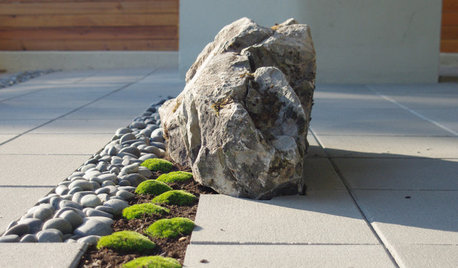How dare I think ..Synthetics or not?
hutchanne
16 years ago
Related Stories

BATHROOM DESIGNDaring Style: Bedroom and Bath, All In One
Loft-Like Open Plans Remove the Master Bath Wall. Is This Look for You?
Full Story
KITCHEN DESIGNSee-Through Refrigerators Dare to Go Bare
Glass-front fridge doors put your food and drinks on display, for better or worse. See the benefits and disadvantages
Full Story
FUN HOUZZDo You Dare Bring Home Some Liberace Razzle-Dazzle?
A new HBO movie highlights the ultimate showman's over-the-top bling all around the house
Full Story
CURB APPEAL9 Daring Colors for Your Front Door
Stand out from the neighbors with a touch of neon green or a punch of hot pink
Full Story
COLORSpring Forecast: Dare to Love Peach Again
8 Succulent Spaces Show How to Welcome Peach Back Home
Full Story
COLOROrange in the Garden: Do You Dare?
Tangerine and other oranges are boldly cavorting from fashionable interiors to outdoor rooms. See some in-vogue examples here
Full Story
DECORATING GUIDESDare to Decorate With Colorful Upholstery
If a scarlet sofa or royal-blue recliner has your heart singing, here's help to make sure it hits the right notes
Full Story
LIFEYou Said It: ‘Be Imaginative, Adaptable and Daring’ and More Quotables
Design advice, inspiration and observations that struck a chord this week
Full Story
DESIGNER SHOWCASESSee the Daring Designs at the 2013 Kip's Bay Decorator Show House
New York designers show their latest creations in a fashion show for the home
Full Story
LANDSCAPE DESIGNDare to Mix Things Up in the Landscape
Courageously contrast plantings, materials and structures in your garden to create unexpected beauty and intrigue
Full Story





lou_spicewood_tx
hutchanneOriginal Author
Related Professionals
Barrington Hills Landscape Architects & Landscape Designers · Harrisburg Landscape Contractors · Norwalk Landscape Contractors · Pine Hills Landscape Contractors · Quincy Landscape Contractors · Sammamish Landscape Contractors · Uxbridge Landscape Contractors · Burleson Swimming Pool Builders · Grandview Swimming Pool Builders · Berkeley Fence Contractors · Bethesda Fence Contractors · Castro Valley Fence Contractors · Centereach Fence Contractors · Citrus Heights Fence Contractors · Goleta Fence Contractorsbpgreen
hutchanneOriginal Author
bpgreen
skoot_cat
skoot_cat
hutchanneOriginal Author
texas_weed
hutchanneOriginal Author
deerslayer
texas_weed
grayentropy
deerslayer
bpgreen
grayentropy
hutchanneOriginal Author
bpgreen
deerslayer
bpgreen
grassman84
bpgreen
grassman84
deerslayer
texas_weed
rcnaylor
deerslayer